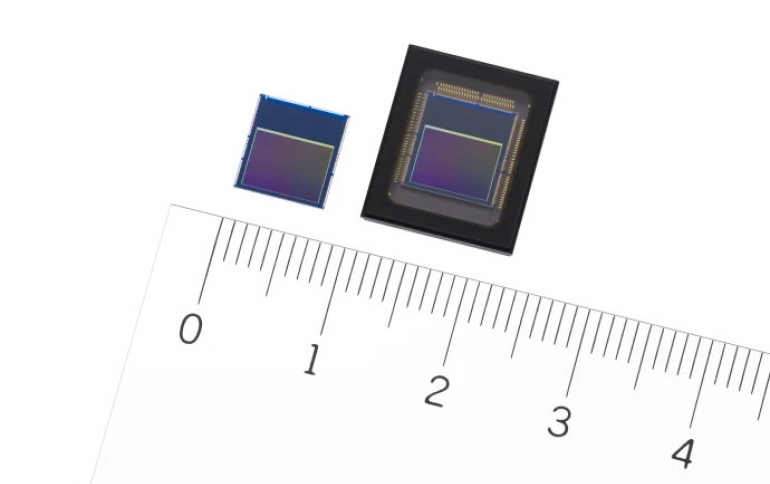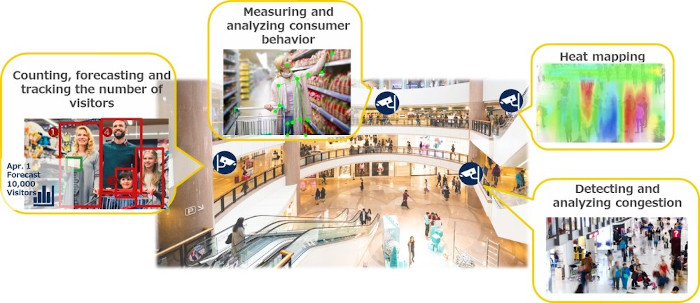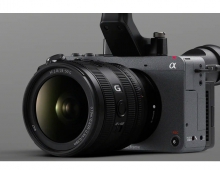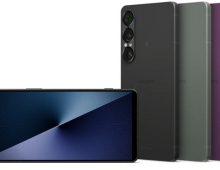
Sony to Release Intelligent Vision Sensors with AI Processing Built in
Sony on Thursday announced the world’s first image sensor with artificial intelligence built in to perform various data-gathering tasks more securely and much faster than existing methods.
The Japanese company announced the upcoming release of two models of "intelligent vision" sensors. Sony says that adding AI processing functionality on the image sensor itself enables high-speed edge AI processing and extraction of only the necessary data, which, when using cloud services, reduces data transmission latency, addresses privacy concerns, and reduces power consumption and communication costs.
| Model name | Sample shipment date | Sample price (excluding tax) |
| IMX500 1/2.3-type (7.857 mm diagonal) approx. 12.3 effective megapixel intelligent vision sensor (bare chip product) | April 2020 | 10,000 JPY |
| IMX501 1/2.3-type (7.857 mm diagonal) approx. 12.3 effective megapixel intelligent vision sensor (package product) | June 2020 (planned) | 20,000 JPY |
IoT devices ar typically connected to cloud-based information processing systems. However, increased data transmission latency is hindering real-time information processing, and security concerns arise related to personal identifiable data stored in the cloud.
Sony's new sensor products feature a stacked configuration consisting of a pixel chip and logic chip. They are the first image sensor to be equipped with AI image analysis and processing functionality on the logic chip. The signal acquired by the pixel chip is processed via AI on the sensor, eliminating the need for high-performance processors or external memory, enabling the development of edge AI systems. The sensor outputs metadata (semantic information belonging to image data) instead of image information, making for reduced data volume and addressing privacy concerns. Moreover, the AI capability makes it possible to deliver diverse functionality for applications, such as real-time object tracking with high-speed AI processing. Different AI models can also be chosen by rewriting internal memory in accordance with user requirements or the conditions of the location where the system is being used.

The pixel chip is back-illuminated and has approximately 12.3 effective megapixels for capturing information across a wide angle of view. In addition to the conventional image sensor operation circuit, the logic chip is equipped with Sony’s original DSP (Digital Signal Processor) dedicated to AI signal processing, and memory for the AI model. This configuration eliminates the need for high-performance processors or external memory, making it ideal for edge AI systems.
Signals acquired by the pixel chip are run through an ISP (Image Signal Processor) and AI processing is done in the process stage on the logic chip, and the extracted information is output as metadata, reducing the amount of data handled. Ensuring that image information is not output helps to reduce security risks and address privacy concerns. In addition to the image recorded by the conventional image sensor, users can select the data output format according to their needs and uses, including ISP format output images (YUV/RGB) and ROI (Region of Interest) specific area extract images.

When a video is recorded using a conventional image sensor, it is necessary to send data for each individual output image frame for AI processing, resulting in increased data transmission and making it difficult to deliver real-time performance. The new sensor products from Sony perform ISP processing and high-speed AI processing (3.1 milliseconds processing for MobileNet V1) on the logic chip, completing the entire process in a single video frame. This design makes it possible to deliver high-precision, real-time tracking of objects while recording video.

Users can write the AI models of their choice to the embedded memory and can rewrite and update it according to its requirements or the conditions of the location where the system is being used. For example, when multiple cameras employing this product are installed in a retail location, a single type of camera can be used with versatility across different locations, circumstances, times, or purposes. When installed at the entrance to the facility it can be used to count the number of visitors entering the facility; when installed on the shelf of a store it can be used to detect stock shortages; when on the ceiling it can be used for heat mapping store visitors (detecting locations where many people gather), and the like. Furthermore, the AI model in a given camera can be rewritten from one used to detect heat maps to one for identifying consumer behavior, and so on.
Sony is the world leader in providing image sensors for smartphones such as Apple’s iPhone and dedicated photo and video cameras from the likes of Nikon.
| Model name | IMX500 (bare chip product) | IMX501 (package product) |
| Number of effective pixels | 4056 (H) × 3040 (V), approx. 12.3 megapixels | |
| Image size | Diagonal 7.857 mm (1/2.3 type) | |
| Unit cell size | 1.55 μm (H) × 1.55 μm (V) | |
| Frame rate | Full pixel | 60 fps |
| Video | 4K (4056 × 2288) 60 fps | |
| 1080p 240 fps | ||
| Full/video+AI processing | 30fps | |
| Metadata output | 30fps | |
| Sensitivity (F5.6 standard value) | Approx. 250LSB | |
| Sensor saturation signal level (minimum value) | Approx. 9610e- | |
| Power supply | Analog | 2.7V |
| Digital | 0.84V | |
| Interface | 1.8V | |
| Main functions | AI processing function, ISP, HDR shooting | |
| Output | MIPI D-PHY 1.2 (4 lane) / SPI | |
| Color filter array | Bayer array | |
| Output format | Image (Bayer RAW), ISP output (YUV/RGB), ROI, metadata | |
| Package | IMX500: - | IMX501: Ceramic LGA 12.5 mm (H) × 15.0 mm (V) |





















